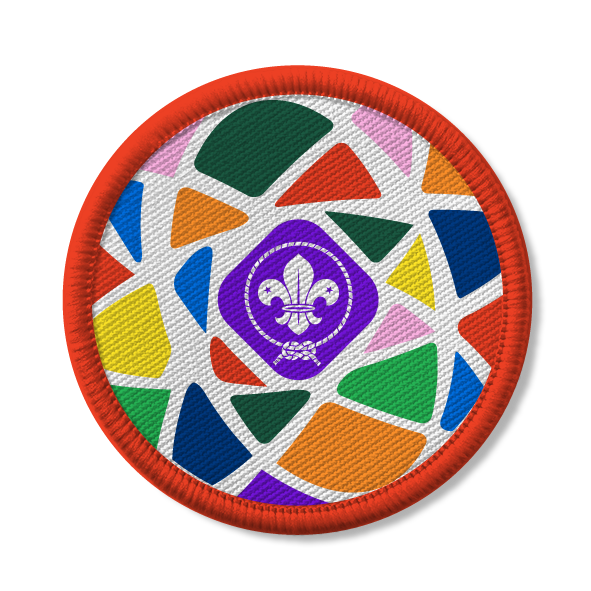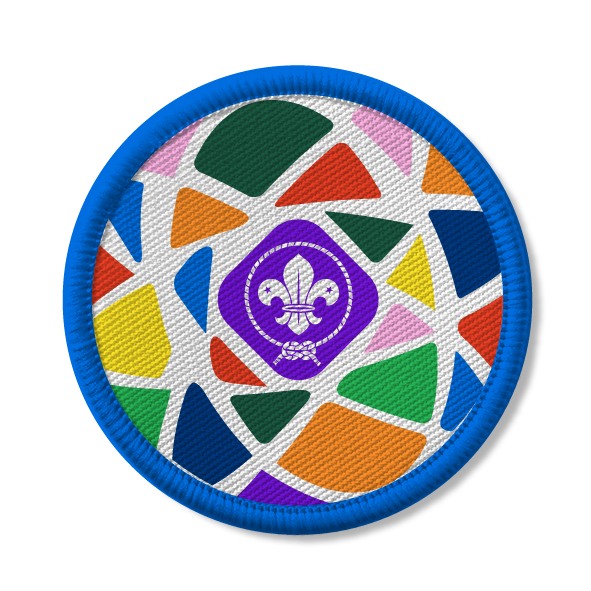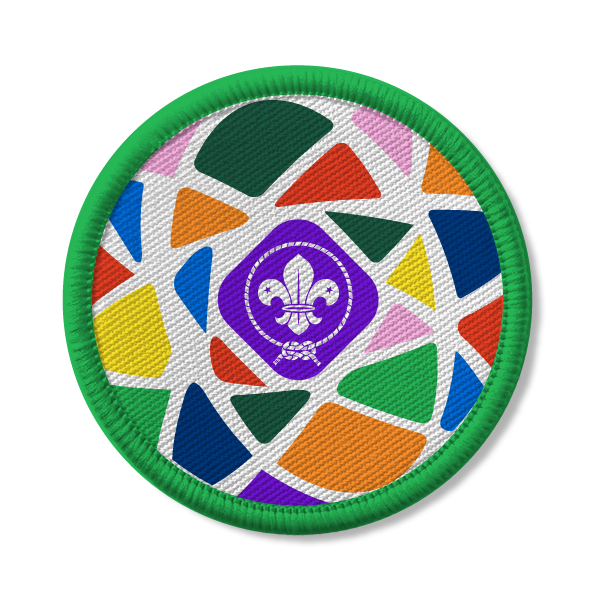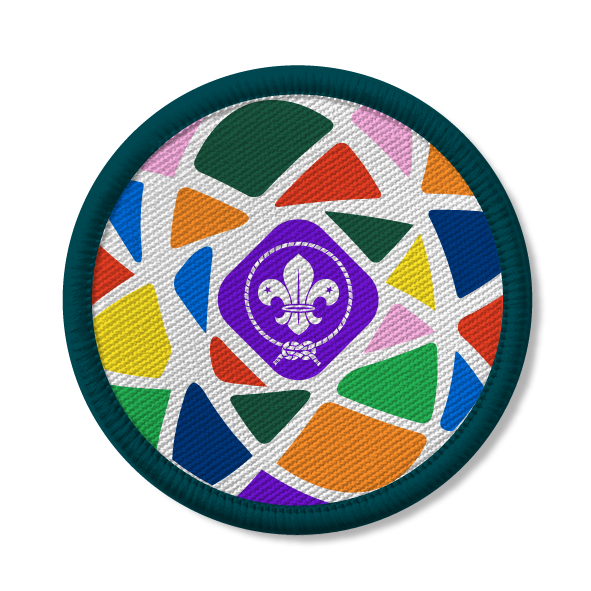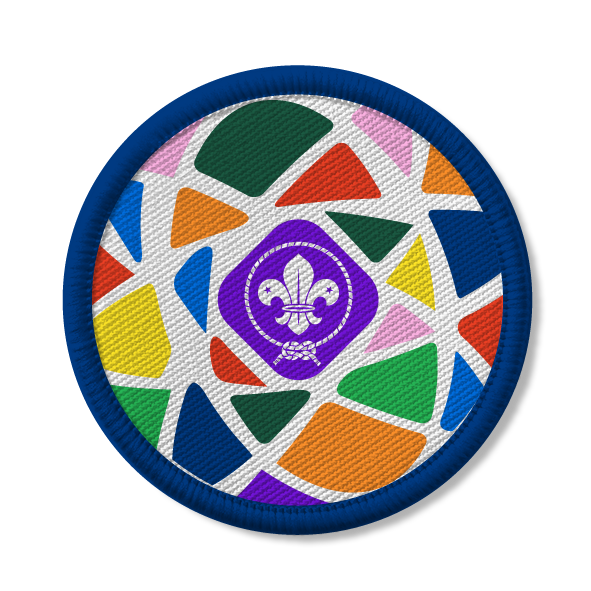
Go on a photography nature hunt
You’ll need
- Pens or pencils
- Scissors
- PVA glue
- Copies of the seeing through different eyes activity sheet, one per person
- Copies of the outdoor photography tips, one per person
- Devices for taking photographs (eg cameras, smartphones)
- Device for printing photographs
- Clipboards, one per person
- Means of transport to a local natural space
- Large display board
- Seek app (optional)
Before you begin
- Use the safety checklist to help you plan and risk assess your activity. Additional help to carry out your risk assessment, including examples can be found here. Don’t forget to make sure all young people and adults involved in the activity know how to take part safely.
- Make sure you’ll have enough adult helpers. You may need some parents and carers to help if you’re short on helpers.
Planning this activity
- Choose an appropriate outdoor area such as outside your meeting place, a nature reserve, woodland area, riverside, canal, or park. If you’re going to meet at a location other than at your usual meeting place, make sure parents and carers know exactly where you’ll be, what people may need to bring, the day, the location, and what time to drop off and collect everyone.
- Make sure everyone knows to come dressed for the weather. Don’t forget to check the forecast and be prepared for it to change.
- It’s important to check the sunset times, making sure that you’ll have sufficient light throughout the activity. It’s best to run this activity on lighter evenings, such as in summer.
- Remember to have suitable supervision, an InTouch process in place and activity consent forms. It’s important to make sure that anyone with medication, including an inhaler, brings it with them and gives it to a volunteer, too.
- Make sure the area you visit is accessible for everyone, choosing a suitable place for drop off and collection. You may need to think about avoiding steps or steep gradients or including frequent breaks.
- Make sure you have printed copies of 'seeing through different eyes' activity sheet and the 'outdoor photography tips' sheet, with enough for each group or person to have a copy.
- You may want to run this activity over two weeks, with one week to take the photos and another week to make the collage.
Introducing the space
- Everyone should head out to the outdoor space or meet at the chosen venue.
- Explain the boundaries of the playing area and where the no-go zones are.
- Tell people how they can use the space respectfully, without disturbing the wildlife or other people enjoying the site if you're in a public space. Remind people to be calm and quiet, so you don’t disturb wildlife, and not picking any flowers or plants. They should handle wildlife gently, take litter home and put things back where they were found to make sure wildlife isn’t harmed or damaged.
- Tell everyone where adults will be around the site and what people should do if anyone in their team needs help. This should include setting memorable spot where an adult will stay at all times.
- Explain the signal to stop play and how long the activity will go on for. A long blast on a whistle works well as a signal to stop the activity.
- If playing in a public space, young people should be paired up so no young person is left alone and they should run or move together.
Run the activity
Talk about the activity
- Everyone should head out to the outdoor space or meet at the chosen venue.
- Everyone should think about the place they’re visiting. Ask everyone to suggest one plant or animal they expect to see.
- Split everyone into small groups. Each group should have a responsible adult with them, always following the Yellow Card.
- Give each group a device for taking photographs, if they don’t already have one that’s suitable for the activity.
- Give each group a copy copies of the ‘seeing through different eyes’ and ‘outdoor photography tips’ activity sheets, as well as a device to take photos on, a clipboard and a pen or pencil.
- Explain that the aim of the activity is for people to take photos of anything they find or see from the sheet. They can also take photos of anything else they find interesting. They could look out for the animals or plants that they predicted they would see earlier. Everyone is welcome to sketch things they see on the back of their sheets if they wish, too.
- Remind people to experiment with the photos and get creative. They should look at things through different perspectives, such as getting very close to some shots (a ‘beetle-eye’ view) or looking down from above (a ‘birds-eye’ view).
- Explain that if people are struggling to think of a new perspective, try putting yourself in the shoes of an animal or plant that lives in a certain place. Imagine how that animal or plant sees the world and try to copy that view when taking the photograph.
Taking the photos
- When everyone is ready, groups should head off to try to complete the activity sheet. Each group needs to be accompanied by an adult. Depending on the group’s age, the adult should hold onto the device for taking photos when it’s not being used.
- The adult or leader in each group should make sure that everyone stays within the limits of the area you’re visiting. These should’ve been set when planning the trip and agreed with everyone before setting out. If wildlife or objects are outside these limits, either take a long distance photograph or use the zoom feature on the picture-taking device to get a closer look.
- Give everyone a set amount of time, such as 20 or 30 minutes, to walk around and complete their activity sheets.
- When this time has passed, everyone should return to the meeting spot.
- Groups should show each other the photos they’ve taken and any sketches they’ve made. Make sure to make a note of people’s favourite photos.
Creating a collage
- On another week, have printed copies of everyone’s favourite photos. You may need to ask parents and carers to send copies of the photos for you to print if they were taken on young people’s personal devices. Remember to follow our digital safeguarding advice.
- People should use scissors and glue to stick their photos and sketches to make an individual collage or group montage. If you’re making a group montage, everyone should decide where their individual images look best.
- When the collages or montage are finished, you could display somewhere where everyone can see it as a reminder or create an art gallery to invite parents and carers to. You could call it ‘Wildlife from different perspectives’ or similar.
Reflection
The group has visited a local natural space and taken some photographs. Some will have also drawn pictures. Why is it so important to record what natural spaces look like? How might this help keep the area the way that it is?
To take their photographs, the group tried to use several different perspectives. These show us how some animals and plants might see the world. They then combined their best shots into a montage. Did everyone enjoy connecting with nature by looking at the world as a beetle or a bird? Did any of the perspectives show you something that you’ve never noticed before? In the montage, how did you decide which photos to group where and are you pleased with the result?
Safety
All activities must be safely managed. You must complete a thorough risk assessment and take appropriate steps to reduce risk. Use the safety checklist to help you plan and risk assess your activity. Always get approval for the activity, and have suitable supervision and an InTouch process.
- Outdoor activities
You must have permission to use the location. Always check the weather forecast, and inform parents and carers of any change in venue.
- Scissors
Supervise young people appropriately when they’re using scissors. Store all sharp objects securely, out of the reach of young people.
- Animals and insects
Be aware of the risks before interacting with animals. Be aware of anyone with allergies, and make alternative arrangements for them.
- Gardening and nature
Everyone must wash their hands after the activity has finished. Wear gloves if needed. Explain how to safely use equipment and set clear boundaries so everyone knows what’s allowed.
- Hiking and walking
Follow the guidance for activities in Terrain Zero, or the guidance for each the adventurous activity.
- Science
Supervise young people, and only do science activities that are advised and age appropriate for your section. Test activities first, to make sure you’re confident you can lead them safely. Use protective clothing where necessary.
- Glue and solvents
Always supervise young people appropriately when they’re using glue and solvent products. Make sure there’s plenty of ventilation. Be aware of any medical conditions that could be affected by glue or solvent use and make adjustments as needed.
- Online safety
Supervise young people when they’re online and give them advice about staying safe. Take a look at our online safety or bullying guidance. The NSPCC offers more advice and guidance, too. If you want to know more about specific social networks and games, Childnet has information and safety tips for apps. You can also report anything that’s worried you online to the Child Exploitation and Online Protection Command. As always, if you’ve got concerns about a young person’s welfare, including their online experiences, follow the Yellow Card to make a report.
- Phones and cameras
Make sure parents and carers are aware and have given consent for photography.
- Near water
Manage groups carefully when near water. The guidance on activities near water will help you to keep your group safe.
Challenge phenomenal photographers to capture every image from every perspective listed on the activity sheet. This way, they can see which one’s best.
Those with mobility issues will need help with any difficult terrain (eg on a shingle beach) and close-up perspectives like beetle-view. Plan out the trip with accessible paths and additional support for members of your group.
All Scout activities should be inclusive and accessible.
If you’re using smartphones with internet access to take your photographs, consider downloading the Seek app for this activity inaturalist.org/seek This app helps identify plants, animals and trees.
Show your photographs to people in the community. They can be a useful part of any social action plan on biodiversity. Your data can even help scientists keep a record of local biodiversity. Encourage others in different areas to carry out citizen science projects to help map natural environments. All of this helps scientists find ways to sustain them.
Discover more at https://www.wwf.org.uk/
Allow groups to choose which plants or animals to photograph and which perspectives to use.



